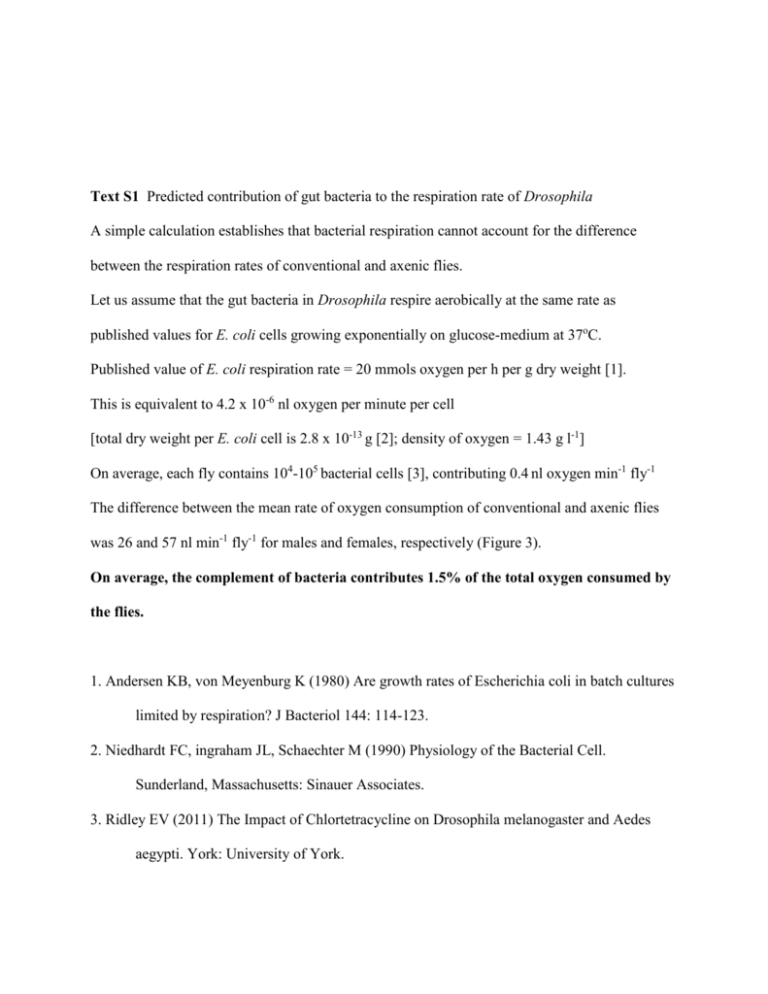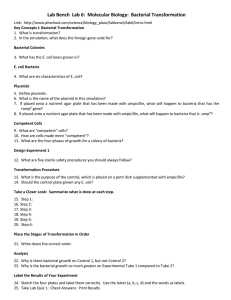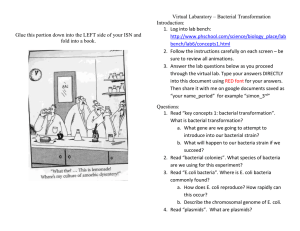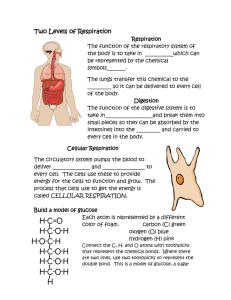Text S1 - Figshare
advertisement

Text S1 Predicted contribution of gut bacteria to the respiration rate of Drosophila A simple calculation establishes that bacterial respiration cannot account for the difference between the respiration rates of conventional and axenic flies. Let us assume that the gut bacteria in Drosophila respire aerobically at the same rate as published values for E. coli cells growing exponentially on glucose-medium at 37oC. Published value of E. coli respiration rate = 20 mmols oxygen per h per g dry weight [1]. This is equivalent to 4.2 x 10-6 nl oxygen per minute per cell [total dry weight per E. coli cell is 2.8 x 10-13 g [2]; density of oxygen = 1.43 g l-1] On average, each fly contains 104-105 bacterial cells [3], contributing 0.4 nl oxygen min-1 fly-1 The difference between the mean rate of oxygen consumption of conventional and axenic flies was 26 and 57 nl min-1 fly-1 for males and females, respectively (Figure 3). On average, the complement of bacteria contributes 1.5% of the total oxygen consumed by the flies. 1. Andersen KB, von Meyenburg K (1980) Are growth rates of Escherichia coli in batch cultures limited by respiration? J Bacteriol 144: 114-123. 2. Niedhardt FC, ingraham JL, Schaechter M (1990) Physiology of the Bacterial Cell. Sunderland, Massachusetts: Sinauer Associates. 3. Ridley EV (2011) The Impact of Chlortetracycline on Drosophila melanogaster and Aedes aegypti. York: University of York.











